Discovering Extraordinary Homes Around the Globe
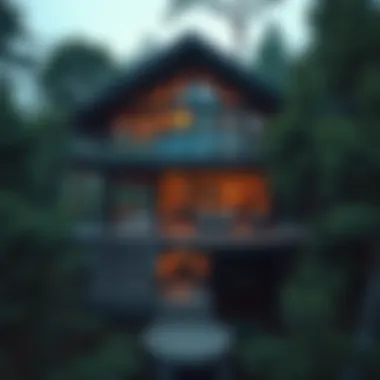
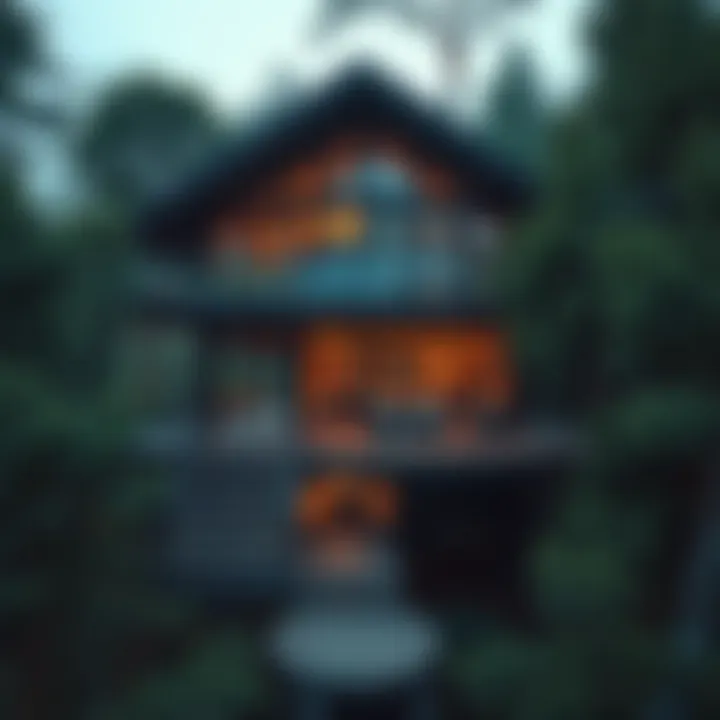
Intro
In an age where individuality is prized, the quest for unique homes and properties has taken center stage among discerning investors and homebuyers. What defines a home as unique? Is it the architectural style that takes one's breath away? Or perhaps the historical significance that tells tales of yesteryears? Whatever it is, these extraordinary spaces serve more than just a roof over one’s head; they weave cultural stories and offer unparalleled experiences.
As we venture through this exploration, we will scrutinize diverse properties that have ruffled some feathers and made waves in the real estate pool worldwide. From sustainable eco-chalets nestled in the serene mountains of Norway to converted historical factories in urban hubs, we will peel back layers to reveal what contributes to their exceptional nature. This article aims to serve as a treasure map for investors, homebuyers, agents, and expatriates eager to dive into the vibrant tapestry of global properties.
Our journey will not only highlight these unique dwellings but also provide market insights that give a bird’s eye view of the dynamics shaping this niche. We’ll explore shifting trends, analyze prices, and share astute investment strategies tailored for various demographics.
With the global property market constantly evolving, staying updated with current trends and comprehensive analyses becomes paramount for anyone looking to navigate and make informed decisions in this domain. So, grab your metaphorical hard hat; we’re about to embark on an illuminating journey through the realm of unique homes and properties, where every corner turned reveals a new story waiting to be told.
Preface to Unique Homes Worldwide
In our ever-evolving world, the concept of home transcends mere shelter. It represents a blend of culture, history, and individual expression. The exploration of unique homes across the globe provides a fascinating glimpse into the diverse architectural styles that arise from specific environments and cultural narratives. This aspect emphasizes the intricate relationship between society and the spaces we inhabit.
The significance of understanding unique homes lies not just in their aesthetic appeal but also in recognizing the stories these dwellings tell. Each property is often a mirror reflecting the history and values of the community around it. For investors and home buyers, mastering the landscape of unique properties unveils a treasure trove of opportunities, often hidden under the surface of the conventional real estate market.
One cannot ignore the broader implications of unique homes in terms of sustainability and innovation. With the increasing emphasis on eco-friendliness and technological integration within residential spaces, buyers can find inspiration in properties that challenge the status quo. Moreover, diving into the world of unique homes equips individuals with knowledge about market trends, helping them make informed decisions whether they’re purchasing for personal use or as an investment.
"A house is made of walls and beams; a home is built with love and dreams." This idiom captures the essence of unique homes - they aren't just about physical structures but rather the emotions and experiences they foster.
Defining Unique Homes
When we discuss unique homes, the term "unique" can manifest in myriad forms. It may encompass unusual designs, innovative building materials, or properties that reflect specific cultural identities. For instance, you'd stumble upon properties like the Crooked House in Poland—an architectural wonder that defies conventional geometry and grips your curiosity.
It's essential to appreciate that unique architecture often responds to regional climates and local resources. In regions prone to heavy snowfall, homes might feature steeply pitched roofs to prevent accumulation; in contrast, tropical habitats welcome airy designs with open spaces to promote airflow. Ultimately, defining a unique home involves looking beyond mere appearance to understand its functionality and cultural resonance.
Cultural Influence on Architecture
Culture serves as a powerful catalyst for architectural innovation. The influence of local traditions and customs shapes not only the appearance of a structure but also its purpose. In Japan, for example, the tea house embodies a rich cultural significance, designed specifically for simplicity and engagement with nature, which starkly contrasts with the grandiose styles seen in other parts of the world, such as the opulent facades of European chateaus.
Further, the adoption of sustainable building practices has led architects to draw on cultural traditions that integrate harmonious living with the natural environment. In some Indigenous communities, homes are constructed with local materials and designed to blend seamlessly with the landscape, illustrating an inherent respect for nature.
All in all, as investors and homebuyers delve into unique homes, acknowledging the cultural intricacies involved becomes essential. It not only enhances understanding but enriches the overall appreciation of the profound artistry of unique properties that exist worldwide.
Architectural Marvels: A Global Perspective
Exploring architectural marvels is akin to wandering through a gallery where each property tells a story. These homes are not just physical structures; they symbolize cultural values, artistic aspirations, and technological innovations. The significance of this topic in the grander scheme of unique homes cannot be overstated. When one appreciates the elegance of a unique architecture, they appreciate the confluence of history, culture, and modernity, ultimately creating an immersive experience that resonates deeply with both residents and visitors.
By examining these wonders, we uncover a mixture of tradition and contemporary needs that defines the uniqueness of properties worldwide.
Influential Design Trends
In the vast world of architecture, design trends often dance like fireflies on a warm summer night, with certain movements illuminating the path for others. Recent influential design trends have emerged that push the boundaries of traditional architecture, offering fresh perspectives and innovative ways to inhabit spaces.
- Minimalism often rises to the forefront with its focus on functionality and simplicity. Think of the sleek lines and uncluttered spaces that characterize homes like the Casa de Cactus in Mexico. This structure showcases how minimalist designs seamlessly integrate into their surroundings, making a statement without the need for an excess.
- Biophilic design captures attention as well, incorporating natural elements into living spaces. From green walls to natural lighting, these designs create environments that foster well-being. The Eden Project in the UK is a prime example, where buildings harmoniously blend with nature, encouraging not just aesthetics but a sustainable way of life.
- Adaptive reuse is also gaining traction, where old buildings are repurposed for modern needs without losing their historical essence. Consider the High Line in New York City, an abandoned railway transformed into a lush park, preserving the city's history while offering innovative public space that is appreciated by all.
These trends highlight a response to environmental concerns and social dynamics, transforming how we perceive and utilize space.
Sustainable Architecture
Sustainable architecture goes hand in hand with the notion that homes should not only serve us but also protect the planet. As climate change pushes communities to rethink their living environments, sustainable design emerges as a beacon of responsibility. These homes often prioritize resources and energy, creating an eco-friendly dwelling without sacrificing comfort or aesthetics.
- Passive solar design mechanisms are increasingly being employed in various regions, utilizing the sun's energy naturally to heat and cool spaces. Homes built with orientation and materials strategically chosen can thrive energy-efficiently. The Hemp House is a notable illustration, showcasing how materials like hemp can contribute to both sustainability and style.
- Renewable energy sources play a pivotal role in sustainable architecture. From solar panels on rooftops—think Tesla's Solar Roof—to wind turbines integrated into properties, the self-sufficiency of homes becomes a proud reality for many. As communities transition to renewable sources, properties reflect a commitment to sustainable living.
- Water conservation strategies, such as rainwater harvesting or greywater recycling, are now considered essential for modern homes. Designers increasingly suggest these features to protect precious water resources.
Epilogue
In this exploration of architectural marvels, we witness how influential design trends and sustainable practices converge to shape unique homes across the globe. As investors and homebuyers dive into these kinds of projects, understanding these elements allows them to appreciate not just the beauty of a property but also its deeper significance. Focusing on these details can give you a leg up when navigating complex real estate options in today's global market.
Types of Unique Properties
The world of unique properties is as diverse as the cultures that inspire them. Highlighting types of unique properties is critical in this exploration, as it opens avenues for understanding architectural innovation, sustainability, cultural heritage, and luxurious living. Whether you're a seasoned investor, a curious buyer, or a devoted real estate agent, recognizing the nuances of different types of properties helps you to make well-informed decisions and enhances appreciation for design artistry.
Eco-Friendly Homes
Eco-friendly homes are revolutionizing the way we think about living spaces. With increasing awareness of climate change, sustainable architecture has gained momentum. These homes are not just about minimizing the carbon footprint; they also harness renewable resources. For example, homes designed with solar panels integrate energy efficiencies that can heavily reduce utility costs over time.
Benefits of eco-friendly homes include:


- Lower energy costs through sustainable practices
- Healthier indoor environments due to non-toxic materials
- Contribution to a cleaner planet, aligning with global conservation efforts
Many eco-friendly properties feature native landscaping and insulation techniques that go beyond standard practices, significantly enhancing their overall efficiency. As a potential investment, eco-friendly homes can appreciate well in value, appealing to a growing number of environmentally-conscious buyers.
Historical Properties
Next on the list, we have historical properties. The charm and character of these dwellings are often unmatched. Every creak of the floorboards and scratch on the walls tells a story, representing eras gone by. Investing in historical properties not only involves putting money into a building but also into the legacy and culture of a place.
Often, these homes are preserved under strict regulations, which can add layers of complexity when it comes to renovation. They serve as reminders of architectural styles and craftsmanship from past decades or centuries. Key considerations include:
- Understanding preservation laws that dictate modifications
- Recognizing the potential financial burdens of maintenance
These properties can draw in attention from tourists and history buffs alike, providing a unique opportunity for rental income in popular historical districts.
Luxury Unique Homes
In the realm of luxury unique homes, extravagance meets individuality. These homes often showcase bespoke architecture, utilizing high-end materials and innovative designs. Purchasing a luxury property involves navigating a competitive market where buyers seek not only a house but a lifestyle. High-end homes might feature advanced home automation systems, state-of-the-art kitchens, or even personal wellness areas.
The allure of luxury properties extends beyond their aesthetics; they often provide exclusivity. Factors to consider for luxury homes include:
- Appraisal values can significantly fluctuate due to market demands
- Various amenities found in the area, such as high-quality schools and recreational facilities
- Potential for investment through short-term luxury rentals
As with all unique properties, understanding market trends is crucial in the luxury sector. Knowing demand will help you either sell or purchase wisely.
Off-the-Grid Dwellings
Lastly, we have off-the-grid dwellings, which represent a growing movement towards self-sufficiency. These homes often escape the propensity for excess utility and gas lines, showcasing an intentional disconnect from mainstream convenience. Living off-the-grid promotes a lifestyle that is both simpler and more sustainable. They often utilize composting systems and rainwater harvesting, showcasing innovation in resourcefulness.
Investing in off-the-grid properties is not without its considerations. One must account for:
- Local zoning laws which may restrict such developments
- The lifestyle change, as it may not suit everyone's comfort levels
- Accessibility to nearby amenities including grocery stores or hospitals
However, these properties often afford owners a deeper connection with their surroundings and, in many cases, a reprieve from the chaotic urban life.
Innovative Design in Unique Homes
Innovative design is the backbone of unique homes and properties worldwide. It entails more than just aesthetics; it weaves together a narrative of culture, technology, and personal expression. This section will delve into the intersection of creativity and functionality, examining how cutting-edge designs can transform living spaces into more than mere shelters.
A unique home stands out not only for its architecture but also for how it utilizes design to enhance the homeowner's experience. Innovative design incorporates elements such as sustainable materials, the integration of technology, and the adaptation to the surrounding environment. These factors don’t just add character; they can significantly promote comfort and energy efficiency.
Interface of Technology and Design
As technology evolves, the ways in which it integrates with home design has shifted dramatically. Gone are the days when technology merely played a supplementary role; modern homes are smart, and this intelligence can drive investment potential.
- Smart Home Features: Today's designs often incorporate sophisticated devices for automating lighting, heating, and security. Homeowners can control these functionalities through smartphones, which adds convenience and security.
- Energy Efficiency: Advanced technologies enable homes to become self-sufficient regarding energy use. Solar panels, for instance, are now commonplace in innovative designs, allowing homeowners to utilize renewable energy and reduce utility costs.
- Virtual Reality (VR) and Augmented Reality (AR): For home buyers and investors, VR and AR can paint a vivid picture of a property before they even step inside. These technologies offer virtual tours, making the home buying process more engaging and informed.
The interplay between technology and design not only enhances the living experience but also attracts investors looking for properties with long-term value.
Interior Design and Aesthetic Appeal
A house may be structurally sound, but its true character emerges through interior design. The arrangement, textures, and colors used within a home can create captivating atmospheres that resonate with its occupants.
- Personal Expression: Interior design allows homeowners to express their individual tastes and lifestyles. Whether opting for minimalist aesthetics or embracing maximalism, the interior space becomes a reflection of the owner's personality.
- Emotional Connection: The right design elements can have an emotional impact. Cozy spaces with warm lighting can evoke feelings of comfort, while open, airy designs can inspire creativity and productivity.
- Cultural Influence: Different cultures bring unique aesthetics to interior design. For instance, Japanese homes often emphasize simplicity and natural materials, while Mediterranean styles may include vibrant colors and textured surfaces, reflecting the region's culture.
The aesthetics of a home, when thoughtfully designed, can enhance its market appeal and create desirability among potential buyers.
"Innovative design synthesizes technology, cultural inspirations, and personal aesthetics, creating unique dwellings that stand out in today’s market."
In summary, innovative design is not merely a fashionable trend; it plays a crucial role in making houses into homes that are functional, appealing, and profitable. As homebuyers and investors delve deeper into unique properties, they must consider both the creative aspects and technological advancements that define them.
Investing in Unique Properties
The allure of unique homes is undeniable, tying together aspects of culture, innovation, and architectural beauty. For investors, purchasing unique properties can be both a passion project and a smart financial maneuver. Investors are often drawn not just by aesthetics, but by the potential for long-term investment returns and the distinctive appeal of properties that stand out in the marketplace.
Market Trends and Opportunities
As we look at the current landscape, several trends are shaping the investment scene pertaining to unique homes. The rise of eco-consciousness is one clear driver; many buyers today seek properties that are environmentally sustainable. This trend has opened avenues for those investing in solar-powered buildings or homes made from recycled materials.
In addition, urbanization is another significant factor. Cities around the globe are experiencing a revitalization, where older properties are being transformed into modern living spaces that reflect both individuality and style. Investors eyeing markets in metropolitan areas can find old warehouses converted into chic lofts or historic homes revamped with contemporary flair.
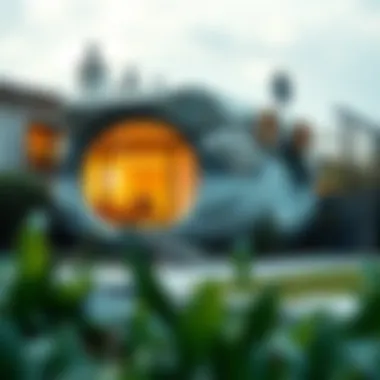
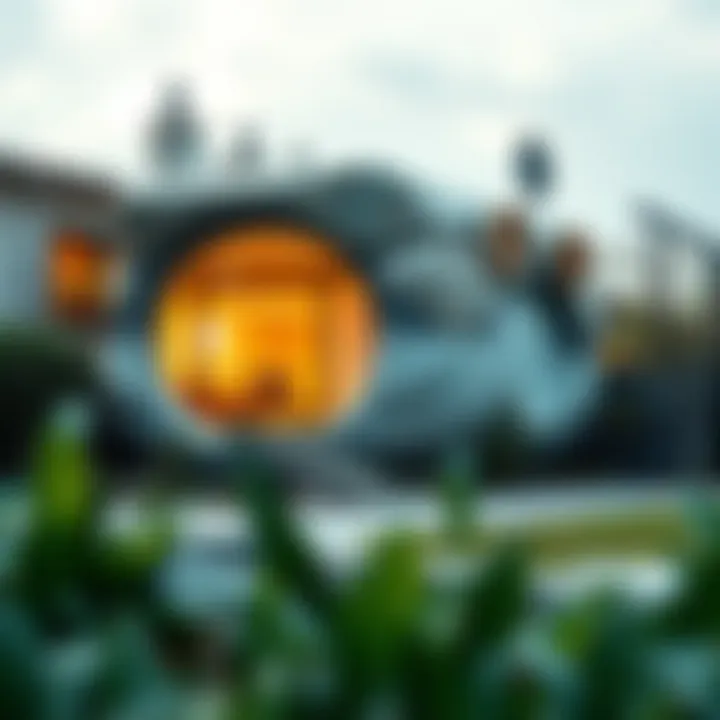
"Investing in unique properties offers a window into cultural narratives and historical significance."
On the flip side, rural properties are gaining traction as remote work arrangements become more commonplace. With the rise of telecommuting, many are looking for houses tucked away in nature, providing serene environments away from the city's hustle and bustle.
Challenges in Unique Property Investments
While the horizon looks promising, investing in unique properties doesn't come without its hurdles. One major concern is the unpredictability in market values. Unlike standard homes, which follow more typical valuation trends based on size and location, unique properties can fluctuate significantly based on buyer preferences and market demand.
Additionally, acquisition and restoration costs can spiral if the property requires substantial work. Properties that boast historical significance may also come with stringent preservation regulations that complicate renovations. Investors must navigate zoning laws and local ordinances, which can affect the future use and modifications of such properties.
Risk must be assessed carefully. An investor may find a stunning old chateau, but understanding the potential financial pitfalls—like hidden repairs or maintenance challenges—can prevent a costly mistake. For successful investment in this sector, it's crucial to conduct thorough research, understand the specific market, and engage professionals who have experience with unique properties.
Case Studies of Notable Unique Homes
Understanding case studies of notable unique homes offers invaluable perspectives for investors, homebuyers, and real estate enthusiasts. They reveal not just architectural beauty or design ingenuity, but also the stories behind these homes. Each unique property tells a tale—a reflection of cultural influences, innovative technologies, and personal aspirations. This section aims to explore famous architectural designs and specific residential case studies that stand out in communities worldwide.
Famous Architectural Designs
When we talk about famous architectural designs, it's like opening a window into the minds of visionary architects who have pushed boundaries. For instance, consider the Fallingwater designed by Frank Lloyd Wright. This iconic home, nestled in Pennsylvania, brilliantly integrates with its natural surroundings using cantilevered terraces over a waterfall. It’s more than a place to live; it embodies harmony between humanity and nature.
The Sydney Opera House, while not a home in the conventional sense, showcases how architectural design can redefine cultural perceptions of living spaces. Its sail-like design speaks to both artistry and function, making it an emblem of Sydney and a masterpiece of modern architecture. .
Each famous design has a unique story that contributes to the greater narrative of architecture, aiming to inspire future generations of builders and dreamers alike.
Some other notable examples include:
- The Casa Batlló in Barcelona, designed by Antoni Gaudí, showcases vibrant colors and organic shapes, drawing from natural forms.
- Villa Savoye by Le Corbusier in France represents the modernist movement in architecture, exemplifying functionality with an engaging aesthetic.
- Montgomery Place in New York, a historic estate showcasing both luxurious living and the importance of preservation in real estate investment.
In exploring these designs, we seek to uncover how each signature element contributes to the idea of a unique home. From the sustainable practices to cultural reflection, these structures reflect their environments, blending gracefully with their backdrops.
Residential Case Studies
Shifting focus to residential case studies, we dive into specific homes where innovation meets everyday living. Take, for instance, a home built into a hangar in San Francisco. This unique residence, once a bustling site for aviation, has been transformed into a stylish loft while preserving its historical context. It stands as a testament to adaptive reuse in real estate.
Consider also the tiny homes movement. A residential case that shines is The Tiny House on Wheels, which epitomizes minimalism and sustainability, costing less and offering a simpler lifestyle. An entrepreneur turned this small structure—merely 200 square feet—into a functioning, comfortable living space that features multi-purpose furniture, emphasizing efficient design without compromising on aesthetics.
On the other hand, the Mushroom House in Ohio takes fantastical design to another level, with its whimsical, fungi-inspired structure that challenges conventional aesthetics. It's a popular tourist attraction, igniting conversations about creativity in architecture while serving as a beloved family home.
These residential cases not only captivate potential buyers or investors but also stir dialogue among architects and urban planners. By studying these unique properties, one can glean not only market trends but also social values, environmental considerations, and the essence of what makes a home.
Ultimately, the exploration of notable unique homes illuminates the diverse ways people embrace their environments and aspirations—offering lessons that stretch beyond the physical walls of the properties.
Legal Considerations for Unique Properties
Understanding the legal framework surrounding unique properties is crucial for anyone looking to invest or live in such homes. These considerations not only shape what is possible within a given property but also influence its market value and long-term appreciation. When exploring unique homes, one must navigate a labyrinth of zoning laws, deed restrictions, and historical preservation regulations. Failing to do so can mean the difference between a smooth transaction and a costly headache.
Zoning Laws and Regulations
Zoning laws are the rules set by local governments that dictate how land can be used in a certain area. Their main job is to separate industrial and residential areas, keeping peace in the neighborhood. For unique homes, zoning regulations can have a hefty impact—especially if the house is in a historic district or has been designed with unique architecture.
For example, a home built to look like a castle may run afoul of zoning regulations because it does not conform with nearby structures. Likewise, eco-friendly homes might struggle with restrictions that limit how they harness renewable energy sources, such as solar panels or wind turbines. Therefore, researching local zoning laws before purchasing is essential. Key points to consider include:
- Use Restrictions: Some properties may have limited uses, such as residential living only, which can affect investment plans for rentals or commercial usage.
- Setback Requirements: These laws dictate how far buildings must be recessed from the edge of the property, which can impact landscaping and design plans.
- Height and Bulk Restrictions: Some areas have maximum height or bulk allowances for buildings, which might limit visibility or obstruct views.
To dive deeper, websites such as govinfo.gov often provide comprehensive details on local zoning laws and requirements.
Historical Preservation Regulations
When it comes to properties that have historical significance, preservation regulations become a pivotal aspect of legal consideration. Many unique homes are linked to a specific culture, era, or even feature architectural styles that need protection. These regulations ensure that any alterations do not diminish the property’s character or its value in the historical narrative.
For instance, if you own a home recognized on the National Register of Historic Places, any renovations may require approval from a local preservation board, which can be tedious and time-consuming. Elements that might be affected include:
- Material Use: Changes to the original materials or structure may require replication of the historical design, impacting renovation costs and techniques.
- External Appearance: Major changes to how the house looks, such as painting or adding extensions, could be restricted to maintain historical accuracy.
- Tax Benefits: Thankfully, many governments provide tax incentives for maintaining the historical integrity of properties, which can significantly offset renovation costs.
A detailed overview can often be found on resources like nps.gov, which explains the guidelines and processes for homes under preservation regulations.
It's often said,
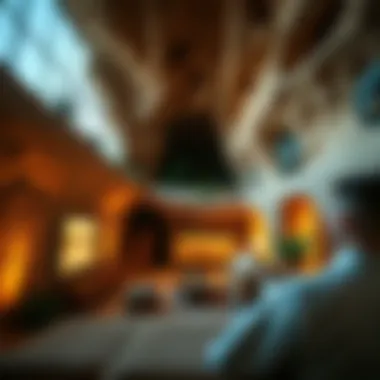
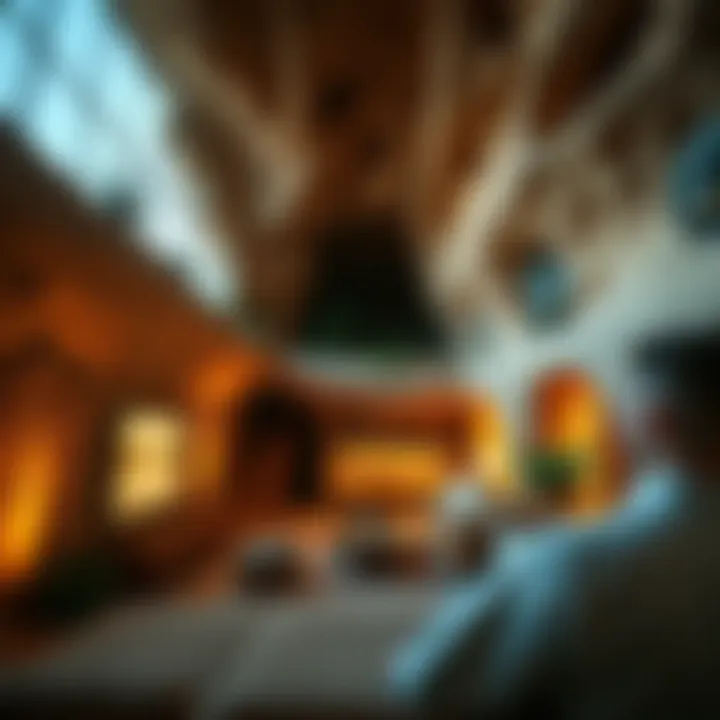
Community and Lifestyle Aspects
The surrounding community and the lifestyle of those living in unique homes play a pivotal role in defining not only the properties themselves but also their social and economic dynamics. This section dives into the significance of these aspects, emphasizing how they shape the identity of unique homes and the experience of those who inhabit them.
Neighborhood Impact on Unique Homes
When it comes to unique properties, the character of the neighborhood can tremendously affect their value and desirability. A home that stands out architecturally, yet is nestled in a lackluster area, might not fetch the high prices one would expect. On the flip side, an unusual home located in an up-and-coming neighborhood may appreciate in value quicker than expected.
The cultural fabric of a neighborhood also contributes to the allure of unique homes. For example, a house designed to be environmentally friendly gains added value in a community that prides itself on sustainability. This sense of belonging to a conscious effort resonates well with buyers:
- Cultural Alignment: Unique designs must resonate with the local culture. A home with local craftsmanship can draw appreciation from the community.
- Inclusivity: Some neighborhoods promote a sense of community, encouraging social interactions among unique homeowners, fostering a friendly environment.
- Community Initiatives: Areas with vibrant community programs can be a boon for unique home prices, as shared efforts enhance the neighborhood's overall appeal.
"A unique home is more than brick and mortar; it’s the heartbeat of a vibrant community."
Lifestyle of Unique Homeowners
Living in a unique home comes with an array of lifestyle possibilities. Often, homeowners attract like-minded individuals who share interests in art, innovation, and sustainability. This shared ethos can create a support network that amplifies personal and communal growth.
- Innovative Living: Many unique homeowners take pride in their distinct residential choices, which often reflect their personal philosophies— be it minimalist living or off-the-grid life. This can foster a lifestyle centered around creative expression and self-sufficiency.
- Community Engagement: Living in such homes can encourage more familial and neighborly interaction. Frequent local events or casual gatherings can thrive in neighborhoods known for unique properties, creating lasting bonds amongst residents.
- Environmental Awareness: Homeowners in eco-friendly unique properties often also lead lifestyles focused on sustainability. This includes practices like organic gardening, waste reduction, and alternative energy sources.
Overall, the community’s influence and the lifestyle of unique homeowners intertwine, crafting an ecosystem that supports both individuality and social interconnection. Such dynamics not only enhance the quality of life for residents but also speak volumes about the homes themselves.
Future of Unique Homes
In today's world, where mass-produced housing has become the norm, the future of unique homes presents a fascinating divergence. These dwellings not only embody a homeowner's aspirations but contribute to the narrative of how we live and interact with our surroundings. Given the noticeable shifts in societal values and technological advancements, understanding the trajectory of unique homes can offer critical insights for investors, buyers, and developers alike.
The rise of eco-conscious living, technological integration, and the need for personalized spaces are pivotal elements shaping this future. Investors and homebuyers are increasingly seeking properties that not only serve as residences but also make statements about lifestyle and values. As cities swell, the urge for unique homes that reflect individuality and sustainability will likely intensify.
Emerging Trends in Home Design
As we glance at the horizon of home design, a few trends stand out vividly:
- Sustainable Materials: The push towards eco-friendliness means homes constructed from bamboo, recycled metals, and even hempcrete are gaining popularity. These materials not only reduce environmental impact but often enhance aesthetic appeal.
- Smart Home Integration: More homes are becoming “smart.” Features like energy-efficient systems, smart security systems, and controlled lighting are not flashy additions anymore; they are rapidly becoming essential. This technological integration improves living experience and underscores a modern, connected lifestyle.
- Biophilic Design: The idea of connecting with nature is being woven into home architecture. Think of houses with vertical gardens, large windows for natural light, and open spaces that promote a seamless flow between the indoors and outdoors.
- Adaptable Spaces: Versatility is the name of the game. Homeowners prefer spaces that can serve multiple purposes. Movable walls and convertible furniture allow rooms to transition from living areas to home offices with relative ease.
"To thrive in the future, homes must echo the values of their inhabitants while addressing the environmental concerns of our time."
These trends reflect a collective yearning for homes that do more than just provide shelter; they should resonate with their occupants.
Predictions for Unique Property Markets
Looking ahead, several predictions about unique property markets can be made:
- Rising Interest in Remote Living: With the increase in remote work, unique homes away from urban centers may see a surge. Buyers might prefer distinctive havens in secluded locales, prioritizing privacy and connection with nature over proximity to workplaces.
- Value of Unique Experiences: Properties that offer unique experiences – such as houses with historical significance or unconventional architecture – will likely command higher prices. Unique characteristics will increasingly act as value propositions in real estate.
- Global Market Diversification: Unique homes may no longer be confined to affluent neighborhoods. As globalization expands opportunities, diverse regions worldwide are likely to see an increase in buyers seeking to invest in unique homes, broadening the market landscape.
- Focus on Community: Homes that foster a sense of community will likely gain more popularity. Properties with shared amenities, eco-villages, or urban communities that align living closely with lifestyle choices are poised for growth.
As the saying goes, "Home is where the heart is,” and soon, it will also be where our values and future intersect.
Closure: The Significance of Unique Homes
Understanding the unique properties of homes around the world serves more than just a niche interest; it encapsulates a wide array of benefits and implications that resonate deeply with various stakeholders. Unique homes often carry tales of cultural heritage, architectural brilliance, and sustainable practices that not only enhance their aesthetic appeal but also provide significant value in today’s market. For investors, these properties can yield surprising returns, reflecting a growing demand for distinctive and character-rich living spaces.
The exploration of unique homes brings to light how architecture is not only a reflection of personal taste but also societal values. These homes often symbolize innovation in design and progressive tendencies in environmental considerations. Buyers who seek unique homes often prioritize personalization and sustainability, aligning their purchase choices with broader lifestyle goals. Understanding these trends can help agents and developers better navigate the complexities of the housing market, positioning themselves as knowledgeable allies to discerning clients.
Additionally, unique homes may also offer distinct community benefits. They can serve as focal points for neighborhood cohesion and pride, contributing to a vibrant sense of place. Often, these properties preserve historical narratives or embody elements that celebrate local culture and diversity. Recognizing the significance of these homes allows all involved—from buyers to investors—to appreciate not just the monetary investment, but the emotional and cultural capital tied to unique properties.
"Unique homes act as a bridge between the past and future, embodying stories and values that transcend generations."
Investing in unique properties goes beyond financial returns. It encourages an appreciation for the artistry involved in each design, acknowledging the craftsmanship that aligns with contemporary needs. This kind of investment signifies a commitment not only to a style of living but also to the community surrounding the home.
Recapping Key Insights
In summation, this exploration has highlighted several key insights regarding unique homes and properties worldwide:
- Cultural Significance: Every unique home reflects cultural narratives, showcasing local traditions, amenities, and societal values.
- Sustainability: Many unique properties incorporate eco-friendly elements, appealing to modern values and conscious living.
- Investment Potential: As the market continues to evolve, unique homes present intriguing investment opportunities, often yielding high returns linked to their distinctive nature.
- Community Identity: These homes often cure a reflective sense of pride and identity for their communities, enriching local culture and promoting social dynamics.
By consolidating these major elements, prospective buyers and investors can make informed choices and develop an appreciation for the multifaceted nature of unique properties.
Encouraging Exploration in Real Estate
For those engaged in the real estate market, be they seasoned investors or first-time buyers, the pursuit of unique homes is more than a trend; it's a movement toward embracing individuality in living spaces. The unique property market invites exploration beyond standard offerings, daring potential homeowners to seek homes that resonate with their values and personal narratives.
New developments in this area encourage creativity both in design and functionality. As modern architecture enthusiasts continue to emerge, there's a palpable shift towards homes that prioritize unique design elements, sustainability, and the incorporation of technology within living spaces.
Engaging with unique properties also involves a commitment to understanding zoning laws, historical preservation norms, and the socio-economic factors that shape these homes. Collaborating with knowledgeable agents and local stakeholders can illuminate the path for buyers, promoting informed decisions that respect both the property and its community.
In closing, the beauty of unique homes lies not just in their distinct aesthetics but also in their ability to foster connection, promote sustainable living, and narrate the stories of the spaces we dwell in. Exploring these properties opens up a world of endless possibilities and growth, both as investors and as individuals seeking exceptional living experiences.







